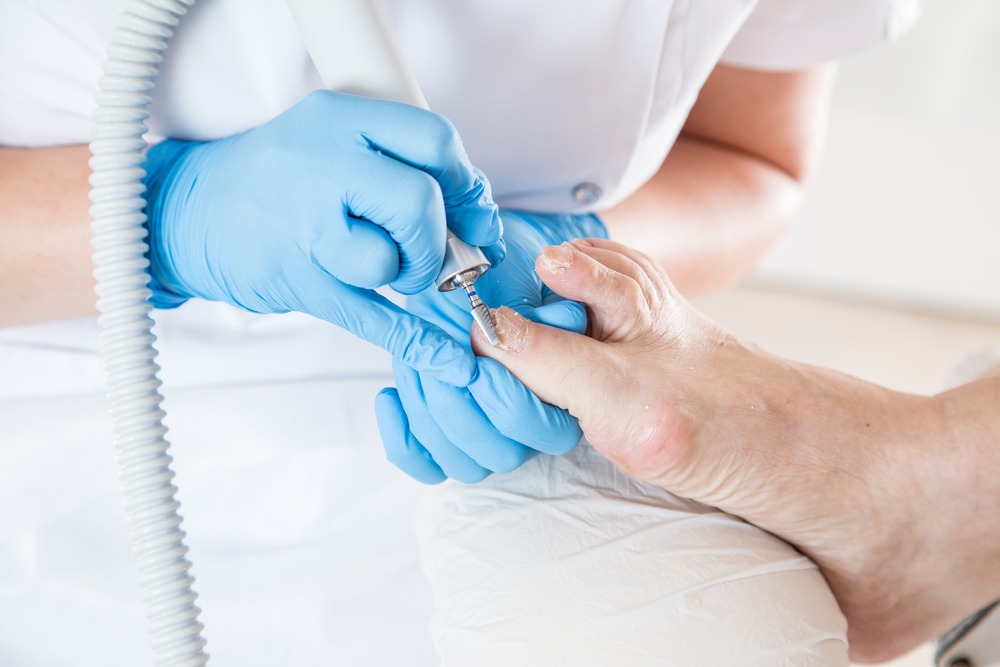Toenail trauma can result from a variety of causes, including a blow, a crush, or a foreign body.
Even if toenail trauma is benign in the majority of cases, there is always the danger of lifelong abnormalities.
It is advised that toenail trauma be treated as soon as possible to reduce the cosmetic hazards connected with it.
Given how similar this sort of damage can be to a tumor under the toenail, it should be given considerably more attention.
Symptoms of traumatic nail damage
Toenail trauma is the nail’s reaction to an unusual shock or force, as the term indicates.
The following symptoms appear after an accident that causes a subungual hematoma:
- A buildup of blood in the shock-affected nail tissue
- A change in the color of the nail to dark purple or blackish blue
- Pain that lasts for a long time or throbs
- Partial or total nail detachment in the weeks following the traumatic incident
Other indications of a toe injury might take the following forms:
- A pigmentary discoloration under the nail that extends as the nail grows (white dyschromia)
- A nail that is partially or completely torn off (in the case of a mild to moderate impact)
- Lesions on the edges of the nail (lateral folds)
- Sharp ache that comes on suddenly
- In the most severe cases, the traumatic nail is accompanied by a phalanx fracture.
Some of these signs and symptoms might be mistaken for those of a tumor beneath the nail.
However, there are a few discrepancies between such manifestations:
- The discolouration does not appear immediately after a trauma, but rather over time.
- The color shift does not occur at the same rate as the development of the nail.
- The lesion does not appear to want to go away.
Even though the nail does not appear to be an issue at first look, it is critical to ensure that it does not provide an infection risk.
The podiatrist can identify the condition and recommend the best course of action.
What might cause toenail trauma?
A blow or excessive force applied to the tip of the foot is always the cause of a traumatic toenail.
The following are some of the circumstances that might cause it to appear:
- The end of the foot, for example, is trapped in a door or between two objects
- A heavy object dropped on the toes
- An ingrown toenail is not treated properly and leads to lesions around it
- A foreign item, such as a splinter, becomes stuck under the toenail
- Wearing shoes that are too small
While most individuals have to cope with painful nails, some people are more prone than others.
This is true for athletes who participate in sports like running or tennis.
They expose themselves to microtrauma by making repeated motions that cause the toes to brush against the toe caps.
This sort of repetitive toe contact causes damage and a traumatized nail over time.
The traumatic nail may potentially cause infection or other unpleasant side effects in certain people:
- People with diabetes or neuropathy
- Immune-compromised individuals (chemotherapy, HIV)
- Those who have had prior infections in their feet, such as athlete’s foot or plantar warts
Preventing toenail trauma
While toenail trauma is difficult to prevent owing to its haphazard character, there are a few things that may be done to decrease its occurrence.
Consider the following:
- Regularly trimming your toenails, avoiding leaving them too short
- Wearing shoes that are suitable for the activity and are the correct size
- Avoid going barefoot in locations where there might be sharp objects or clumps of materials (such as rocks or wood fiber)
Treating toenail trauma
The majority of traumatic nail injuries should not be reason for alarm.
However, because no one is immune to consequences, it’s essential to make sure the injury is appropriately recognized and treated.
It’s a good idea to take these easy steps to reduce discomfort soon after the accident that produced the toenail trauma:
- Submerge your toes or foot in chilly water
- If there is a wound, clean and disinfect the wound with an antiseptic
- Apply a lotion or gel to alleviate the discomfort connected with the trauma if the situation allows
Call your podiatrist if you believe a hematoma under the nail is the source of your discomfort.
Your podiatrist will be able to recognize your symptoms and provide treatment to alleviate the painful nail.
In most cases, the podiatrist’s recommendations are as follows:
- Removal of the foreign body that is causing the pain
- Treatment of an ingrown toenail
- Drainage of the subungual blood with a sterile needle inserted into the hard part of the nail
However, if the nail and toe have been severely damaged, a total nail removal may be considered.
PiedRéseau: do not forget about your toenails!
Are you interested in learning more about toenail trauma? This is a topic on which we frequently write!
Despite the fact that the PiedRéseau website is full of information, nothing matches a face-to-face consultation with a podiatrist.
Take care of your feet, they’re precious!

